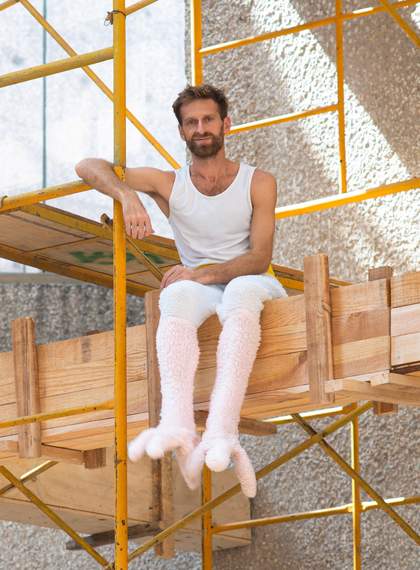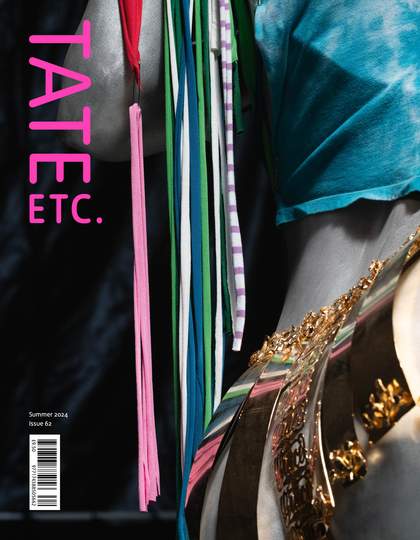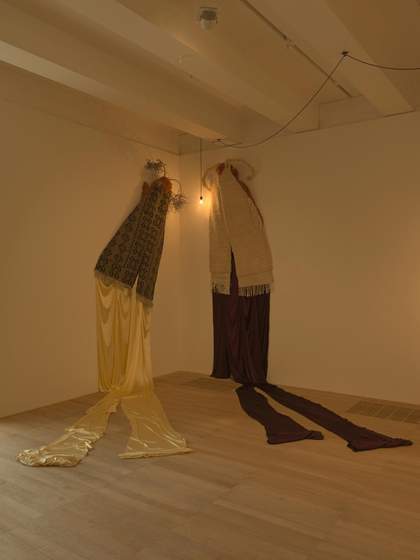
Petrit Halilaj installing his exhibition RUNIK at Museo Tamayo, Mexico City, 2023
Photo © Francesc Pascual Torrens
TATE ETC. Animals often appear in your art. What drew you to moths for this project?
PETRIT HALILAJ Back in 2009,while installing an exhibition in Pristina, Kosovo, I found 17 old, dusty boxes containing a moth collection from the old Museum of Natural History. I became fascinated by these objects that had been left in a humid storage room for time and history to shape.
ETC. Why had the moths been left there?
PH In 2001, two years after the Kosovo War ended, the government hastily removed the collection to create an ethnographic museum celebrating ethnic Albanian culture in the same building. Today, it’s filled with traditional carpets, like the ones I’ve used to make my moths.
I’m interested in connecting these political events to personal histories. This project combines the hidden colours and beauty of moths’ underwings, hidden collections, and hidden desires and identities.
ETC. How does this relate to your biography?
PH In many ways. Growing up in Kosovo, for example, being gay was something I had to hide and repress. If you didn’t do that, society would do it for you. Now things are changing positively, but around the time I made this work, I was thinking about how to come out to my family. Moths have cocoons, and I probably had an intuition to build a space of protection.
ETC. Do you sometimes wear the sculptures?
P H Yes, I love making surprise appearances in them. In Kosovo, I wore a moth costume for an artist talk. I think it’s related to a common need for masks and theatricality in day-to-day life.
ETC. There’s optimism in your work, despite the heavy themes. How do you stay hopeful?
PH I’ve realised that you can build spaces for hope and fight for things to be different. You can identify a failing, in yourself or events, and celebrate your way of seeing it. Hopefully, you might also find ways of expression and extending reality that allow other people to participate. That’s what I really love doing with art.
Six moths from the series Do you realise there is a rainbow even if it’s night!? are included in the free collection display Performer and Participant at Tate Modern.
Partial purchase with funds provided by the Russia and Eastern Europe Acquisitions Committee and partial gift by Jennifer Chert, Florian Lüdde and Kamel Mennour 2020




